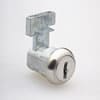Silicone Vs. Polyurethane
The basic characteristics of silicone and polyurethane make them ideal for the production of O-rings, but each have high performance in some areas and low performance in others. This is why it is extremely important to be knowledgeable about the product you are using and the conditions that it will need to withstand. So, let’s discuss the major points of these two products.
The silicone O-ring is the general standard when it comes to sealing products because they are simple to use, inexpensive to produce, and quite versatile. The qualities of the silicone rubber compounds also result in an end product that can withstand weathering, acid, and extreme heat. Withstanding extreme temperature is probably silicone’s most desired quality as it endures in temperatures as low as –120°F and as high as 450°F. However, when it comes to abrasion resistance and tensile strength, silicone falls a little short. Silicone O-rings are also fairly permeable and not suited for oil or steam exposure.
Now, let’s take a look at Polyurethane O-rings. Polyurethane definitely outperforms silicone in regards to toughness, abrasion resistance, and extrusion resistance. They can endure extreme pressure up to 5,000 psi and can resist explosive decompression. But, when it comes to extreme heat and cold they fall short of silicone’s durability, as they can only with stand temperatures from -90 to 225°F.
So, it comes down to temperature resistance vs. tensile strength. Both of these aspects can be crucial depending on the application of the O-ring, so make an informed decision and always stay on the safe side.


 Castings & Forgings
Castings & Forgings Bulk Material Handling
Bulk Material Handling Electrical & Electronic Components
Electrical & Electronic Components Flow Instrumentation
Flow Instrumentation Hardware
Hardware Material Handling Equipment
Material Handling Equipment Metal Cutting Services
Metal Cutting Services Metal Forming Services
Metal Forming Services Metal Suppliers
Metal Suppliers Motion Control Products
Motion Control Products Plant & Facility Equipment
Plant & Facility Equipment Plant & Facility Supplies
Plant & Facility Supplies Plastic Molding Processes
Plastic Molding Processes Pumps & Valves
Pumps & Valves Recycling Equipment
Recycling Equipment Rubber Products & Services
Rubber Products & Services